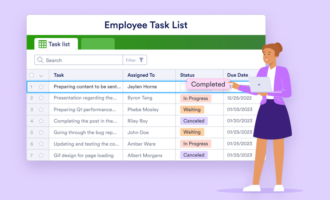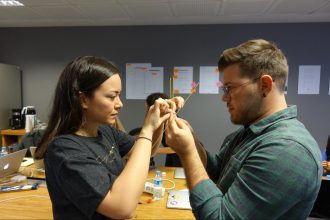How well does your business collaborate remotely? Whether you’re a business owner or a manager, maintaining communication and cohesion in a remote team can be a challenge. Not only do you need to share information with employees, but you also need an effective system for listening to their feedback and ideas.
Common challenges
To improve communication and collaboration in a remote work environment, start by identifying the issues that might disrupt productivity. Some of the most common problems in remote work are
- Lack of clear boundaries and routines
- Difficulty focusing during business hours
- Miscommunication between team members
- Debating and brainstorming ideas without in-person meetings
- Coordinating activities from different locations
- The breakdown of company culture and team cohesiveness
Occasional breakdowns in communication might seem like a small matter. Business owners and managers might not notice a significant change in employee performance due to miscommunication at first.
But small issues add up over time, leading to significant problems with performance. Luckily, there are simple solutions you can implement to avoid these common challenges of remote collaboration.
How to foster collaboration
Implementing a few practices can help you overcome these common remote work issues and create an environment where remote workers thrive. The goal is to build a shared vision of the future while empowering employees to step up in their responsibilities as essential parts of the team.
Consider these ways to improve remote collaboration among your employees:
- Set team goals. Every employee should have personal performance targets that align with team goals. Setting clear, detailed goals is necessary to track progress and evaluate productivity over time. When designing personal and team goals, pick objectives that match the company mission and vision.
- Assign responsibilities. How should employees fill their work hours each day? Without clear expectations and responsibilities, even the most important tasks can fall by the wayside. A critical step in improving remote collaboration is to ensure that you’re clear about daily, weekly, and monthly responsibilities.
- Define schedules. While a flexible work schedule is a benefit of remote work, team schedules must be aligned. It’s challenging to build team collaboration if employees don’t have the opportunity for real-time communication. Consider time zones and schedule overlaps to identify optimal times when team members can collaborate.
- Meet regularly. Set a dedicated time on the calendar for a virtual team huddle. For example, you might have a daily check-in where team members talk about their accomplishments, current projects, and issues that are disrupting their progress.
- Prioritize team building. While focused meetings are essential to project work, don’t forget that virtual “water cooler” time is also necessary for building solid relationships among team members. Promote positive company culture through activities like multiplayer gaming, virtual coffee sessions, or a dedicated channel for casual conversations.
- Establish discussion channels. Where should team members go when they need to talk to a manager or coworkers? Having clear communication channels ensures that people can access support and information when they need them. Videoconferencing and group messaging are effective for team communication. Also, offer opportunities for one-on-one remote collaboration through phone calls, email, or text.
- Invest in software. Teams need to share and collect information remotely, which is why it’s essential to invest in the right tools. Jotform Tables is an excellent solution for gathering data and collaborating with other team members. In addition to collecting and centralizing data, you can also analyze information quickly and easily.
- Increase communication. Even if you think you’re clear in your conversations, be proactive in overcommunicating when discussing critical points. Vague requests and statements can get in the way of cohesive collaboration. In communication over text or chat, you miss the tone and body language of an in-person conversation, leaving information open to interpretation. Overcommunication ensures your message has the intended result.
When you have the right tools and a good vision for the future, you can boost remote collaboration and optimize performance at the same time. Effective collaboration is a critical aspect that will determine the long-term success of your company. By implementing the tips outlined above, you can build a stronger team of remote workers.


























Send Comment: